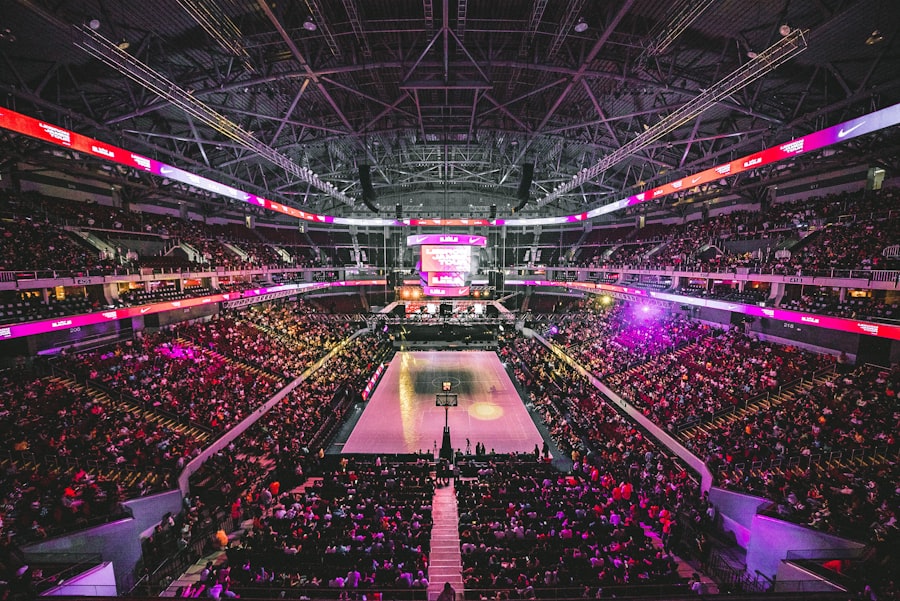Download links
How to install The Science of Bouncing Ball APK?
1. Tap the downloaded The Science of Bouncing Ball APK file.
2. Touch install.
3. Follow the steps on the screen.
Description
Bouncing is a fascinating phenomenon that can be understood through the lens of physics, particularly mechanics. When an object, such as a ball, is dropped from a height, it accelerates towards the ground due to gravity. Upon impact with a surface, the ball deforms slightly, storing some of the kinetic energy it had while falling.
This deformation is temporary; as the ball regains its shape, it converts the stored energy back into kinetic energy, propelling it upward. This process is governed by Newton’s laws of motion, particularly the second law, which states that the force acting on an object is equal to its mass times its acceleration. The energy transformations involved in bouncing can be described using the principles of conservation of energy.
When the ball is at its highest point, it possesses gravitational potential energy. As it falls, this potential energy is converted into kinetic energy. Upon hitting the ground, some of this kinetic energy is transformed into elastic potential energy as the ball compresses.
The efficiency of this energy transfer determines how high the ball will bounce back. If no energy were lost to heat or sound during the impact, the ball would bounce back to its original height. However, in reality, some energy is always dissipated, leading to a lower bounce height with each successive drop.
Key Takeaways
- The physics of bouncing involves the transfer of kinetic energy and potential energy between the ball and the surface it bounces on.
- Elasticity plays a crucial role in bouncing, as it determines how much energy is stored and released during the bounce.
- Factors affecting bounce height include the material of the ball, the surface it bounces on, and the angle and force of impact.
- The relationship between surface and bounce is influenced by factors such as friction, hardness, and smoothness.
- Bounce kinetics involve the study of the forces and energy involved in the motion of a bouncing ball.
The Role of Elasticity in Bouncing
Elasticity plays a crucial role in the bouncing behavior of objects. It refers to the ability of a material to return to its original shape after being deformed. In the context of a bouncing ball, elasticity determines how much kinetic energy is retained after impact.
Materials with high elasticity, such as rubber, can deform significantly upon impact and then quickly return to their original shape, allowing for a more efficient transfer of energy back into motion.
The coefficient of restitution is a key concept related to elasticity that quantifies how much kinetic energy remains after a collision.
It is defined as the ratio of the speed after the collision to the speed before the collision. For example, if a rubber ball has a coefficient of restitution close to 1, it means that it retains most of its kinetic energy after bouncing. In contrast, a ball made from a less elastic material might have a coefficient closer to 0, indicating significant energy loss during the bounce.
This property not only affects how high a ball bounces but also influences how it behaves during play in various sports.
Factors Affecting Bounce Height

Several factors influence how high a ball will bounce after being dropped or thrown. One primary factor is the height from which it is dropped; generally, the greater the height, the more gravitational potential energy is converted into kinetic energy upon descent. However, this relationship is not linear due to other influencing factors such as surface type and material properties. For instance, dropping a ball on a hard surface like concrete will yield a higher bounce compared to dropping it on grass or carpet.
Another significant factor is the temperature of both the ball and the surface it impacts. Temperature affects the elasticity of materials; for example, rubber becomes more elastic at higher temperatures, allowing for better energy retention during a bounce. Conversely, colder temperatures can make rubber stiffer and less capable of returning to its original shape quickly after deformation.
This change in elasticity can lead to noticeable differences in bounce height under varying temperature conditions.
The Relationship Between Surface and Bounce
| Surface Type | Bounce Height (cm) |
|---|---|
| Concrete | 15 |
| Grass | 20 |
| Wood | 18 |
| Rubber | 25 |
The type of surface on which a ball bounces has a profound impact on its bounce characteristics. Hard surfaces like concrete or hardwood floors provide minimal energy loss during impact due to their rigidity and lack of deformation. When a ball strikes such surfaces, it retains more kinetic energy and bounces higher compared to softer surfaces like grass or sand, which absorb more energy upon impact.
Different sports utilize this relationship between surface and bounce to their advantage. For instance, basketball courts are typically made from hardwood or synthetic materials that maximize bounce efficiency for basketballs. In contrast, tennis courts can be made from clay or grass, which alters the bounce characteristics of tennis balls and affects gameplay strategies.
The interaction between the ball and surface texture also plays a role; rough surfaces can create additional friction that may dampen bounce height or alter trajectory.
The Science Behind Bounce Kinetics
The kinetics of bouncing involves analyzing forces and motions during the impact phase and subsequent rebound.
The interaction between these forces determines how much kinetic energy is converted back into motion.
During impact, the deformation of the ball creates an impulse that affects its velocity post-collision. The impulse-momentum theorem states that the change in momentum of an object is equal to the impulse applied to it. This principle helps explain why different balls exhibit varying bounce behaviors based on their mass and material properties.
For example, heavier balls may experience greater momentum changes upon impact compared to lighter ones, affecting their rebound height and speed.
Bouncing Ball Materials and Their Impact

The materials used in manufacturing balls significantly influence their bouncing characteristics. Common materials include rubber, plastic, and foam, each with distinct properties affecting elasticity and durability. Rubber balls are often favored for their high elasticity and ability to withstand repeated impacts without significant wear.
This makes them ideal for sports like basketball and soccer where consistent performance is crucial. In contrast, foam balls are designed for safety and are often used in children’s play or training environments where minimizing injury risk is essential. While they may not bounce as high as rubber balls due to their lower elasticity and higher compressibility, they provide a softer landing and are easier to handle for young players learning coordination skills.
The choice of material thus reflects a balance between performance requirements and safety considerations in various applications.
The Influence of Air Pressure on Bounce
Air pressure within a ball can significantly affect its bouncing ability. For inflatable balls like basketballs or soccer balls, proper inflation ensures optimal performance during play. When these balls are under-inflated, they become softer and less rigid, leading to increased deformation upon impact with surfaces.
This results in lower bounce heights as more energy is absorbed rather than returned into motion. Conversely, over-inflation can lead to excessive rigidity, which may cause the ball to bounce too high or become difficult to control during play. The ideal air pressure varies depending on the sport; for instance, FIFA regulations specify specific pressure ranges for soccer balls to ensure fair play and consistent performance across different conditions.
Understanding how air pressure affects bounce dynamics allows athletes and coaches to optimize equipment for training and competition.
Applications of Bouncing Ball Science
The principles governing bouncing balls extend beyond sports into various fields such as engineering, material science, and even robotics. In engineering applications, understanding bounce dynamics can inform designs for shock absorbers or cushioning systems that mitigate impact forces in vehicles or protective gear for athletes. By applying knowledge about elasticity and energy transfer, engineers can create materials that enhance safety while maintaining performance.
In robotics, researchers study bouncing mechanisms inspired by biological systems to develop robots capable of navigating uneven terrains or performing agile movements. These robots often utilize principles of elasticity and kinetic energy transfer to mimic natural locomotion patterns found in animals that rely on bouncing for movement efficiency. Furthermore, educational settings leverage bouncing ball science as an engaging way to teach fundamental physics concepts such as energy conservation and motion dynamics.
Experiments involving different types of balls and surfaces allow students to observe firsthand how variables affect outcomes, fostering deeper understanding through practical application. Through these diverse applications, the science behind bouncing balls continues to influence innovation across multiple disciplines while enhancing our understanding of fundamental physical principles at play in everyday life.
FAQs
What is a bouncing ball?
A bouncing ball is a small, round object that is designed to rebound off of surfaces when dropped or thrown.
What are bouncing balls made of?
Bouncing balls are typically made of rubber or a similar elastic material that allows them to compress and then quickly regain their original shape when they come into contact with a surface.
How does a bouncing ball work?
When a bouncing ball is dropped or thrown, it compresses upon impact with a surface, storing potential energy. This potential energy is then released, causing the ball to rebound off the surface.
What are the different types of bouncing balls?
There are various types of bouncing balls, including super bouncy balls, rubber balls, and high bounce balls. Each type has different levels of elasticity and bounce height.
What are the uses of bouncing balls?
Bouncing balls are commonly used as toys for children, in sports such as basketball and tennis, and in various physics experiments to demonstrate concepts such as energy transfer and elasticity.
Are there any safety considerations when using bouncing balls?
While bouncing balls are generally safe to use, it is important to be cautious when using them in crowded or confined spaces to avoid injury to others. Additionally, some bouncing balls may pose a choking hazard for young children.





